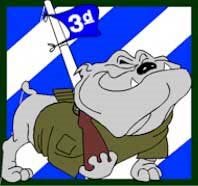What are we talking about when we say "situational awareness"? One might say it's kind of obvious: being aware of the situation. OK, on the surface, that's very true. Let me dig a little deeper and provide some color around detailed situational awareness with some examples.
Pilots train on situational awareness because, to ensure their aircraft, crew/passenge rs, and cargo are safe as they travel through the air, they need to know about weather patterns, terrain, and other aircraft in the area, just to name a few concerns. They don't want to have an accident because they didn't know all the variables taking place around them.
rs, and cargo are safe as they travel through the air, they need to know about weather patterns, terrain, and other aircraft in the area, just to name a few concerns. They don't want to have an accident because they didn't know all the variables taking place around them.
 rs, and cargo are safe as they travel through the air, they need to know about weather patterns, terrain, and other aircraft in the area, just to name a few concerns. They don't want to have an accident because they didn't know all the variables taking place around them.
rs, and cargo are safe as they travel through the air, they need to know about weather patterns, terrain, and other aircraft in the area, just to name a few concerns. They don't want to have an accident because they didn't know all the variables taking place around them.The military uses something called an Operations Order or "OPORD" to let the troops know the details of the mission, to provide critical information to all concerned, and so the soldiers are able to identify and potential problems. There are five paragraphs in an OPORD. What do you think the first paragraph covers? You guessed it -- the Situation. Under the Situation section, you can find info on enemy forces, friendly forces, and the environment (weather, terrain, civil considerations, etc.).
Professionals, especially leaders, need to be aware of their surroundings -- their situations, too. Out in the world, pitfalls and snares are plentiful. Leaders need to know about the friendly forces (people who can help them accomplish their mission), enemy forces (like competitors), and the environment where, if you are unaware, you can get into lots of trouble. Leaders should be able to analyze their business and situations based, in part, by solid situational awareness.

Do you have any examples of proper situational awareness? Can you share any other possible situations that can derail the efforts of leaders or organizations as they strive to complete their missions?





